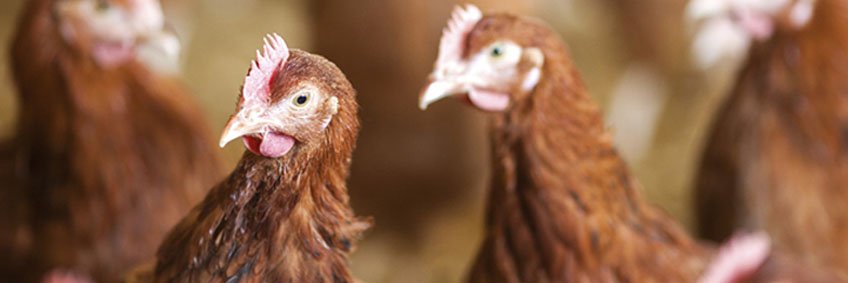Identifying signs of disease in poultry

Observing your birds is best done while they are relaxed. Disturbing them or handling them can:
- disguise the signs of disease (e.g. a gasping bird might stop mouth-breathing when handled)
- increase the signs of disease (e.g. a nervous disorder, such as a tremor, might appear because the bird is frightened while being handled).
Common signs of disease in poultry
There are common signs of disease that you can use to detect potential illness in chicken and other poultry. Some of these include:
- feather loss (unless birds are going through a natural moult)
- general inactivity
- discharges
- abnormal droppings
- dull and/or closed eyes
- ruffled feathers
- drooped wings
- sitting on haunches or lying down.
The following table outlines the common characteristics displayed by healthy birds compared to sick or diseased birds in both adult and young poultry.
Adult poultry
| Characteristic | Healthy birds | Diseased birds |
|---|---|---|
|
Stance |
|
|
|
Head |
|
|
|
Muscles |
|
|
|
Legs and feet |
|
|
|
Feathers |
|
|
|
Colour |
|
|
|
Appetite and thirst |
|
|
|
Droppings |
|
|
|
Abdomen |
|
|
|
Vent |
|
|
|
Breathing |
|
|
Young poultry
| Characteristic | Healthy birds | Diseased birds |
|---|---|---|
|
Navel area |
|
|
|
Vent |
|
|
|
Legs and feet |
|
|
|
Wing feathers |
|
|
Keep records
Keeping records on general production figures such as daily mortalities, feed and water consumption and egg production is essential. A drop in production or change in feed conversion ratio can often be the first sign of disease. Keeping and monitoring records can help to detect an illness early.
Large numbers of mortalities is an immediate alert that a problem exists.
Source: https://www.business.qld.gov.au/









.jpg)



